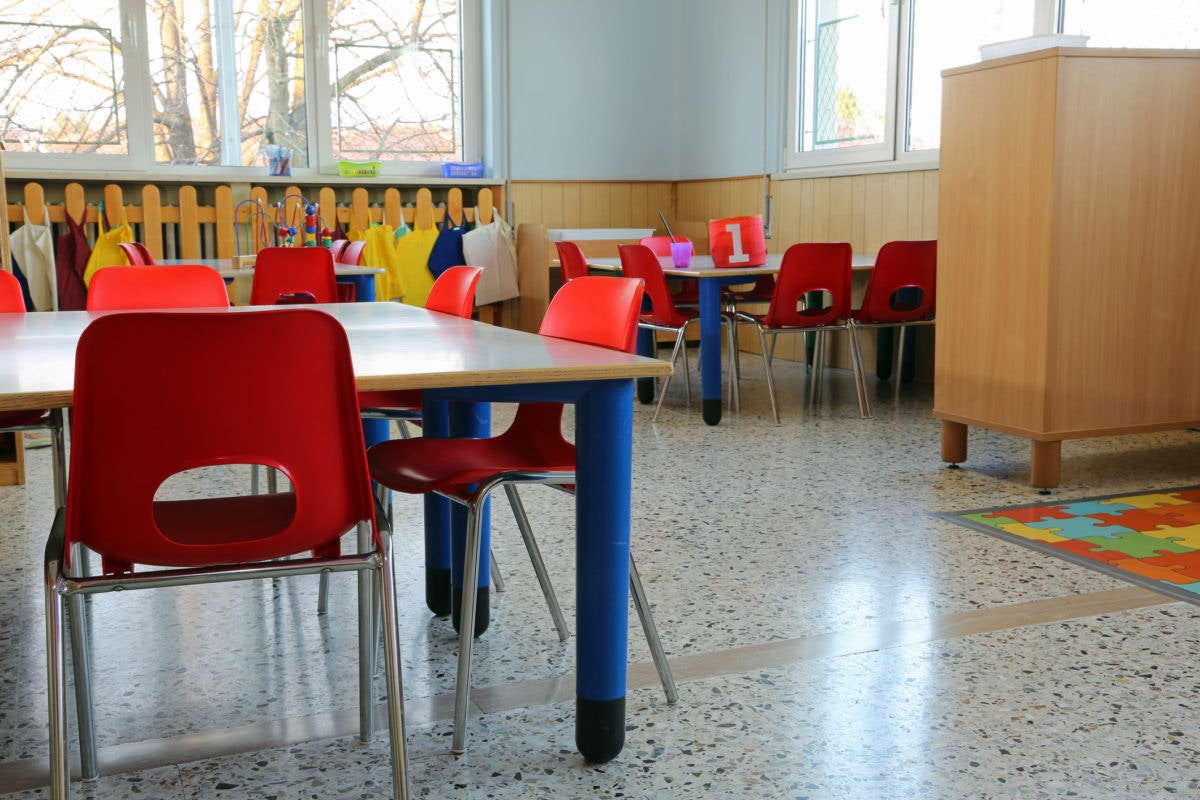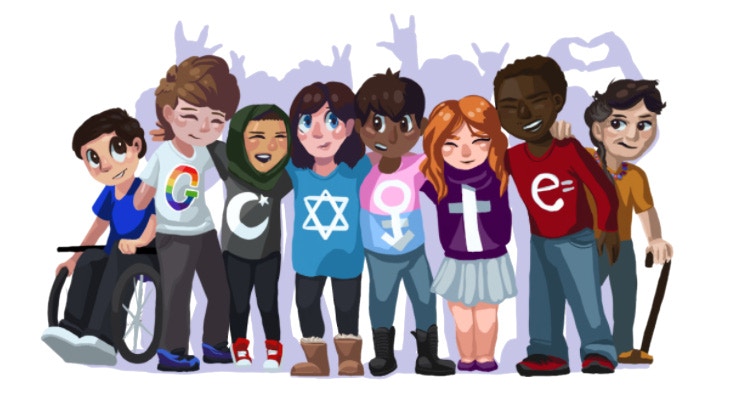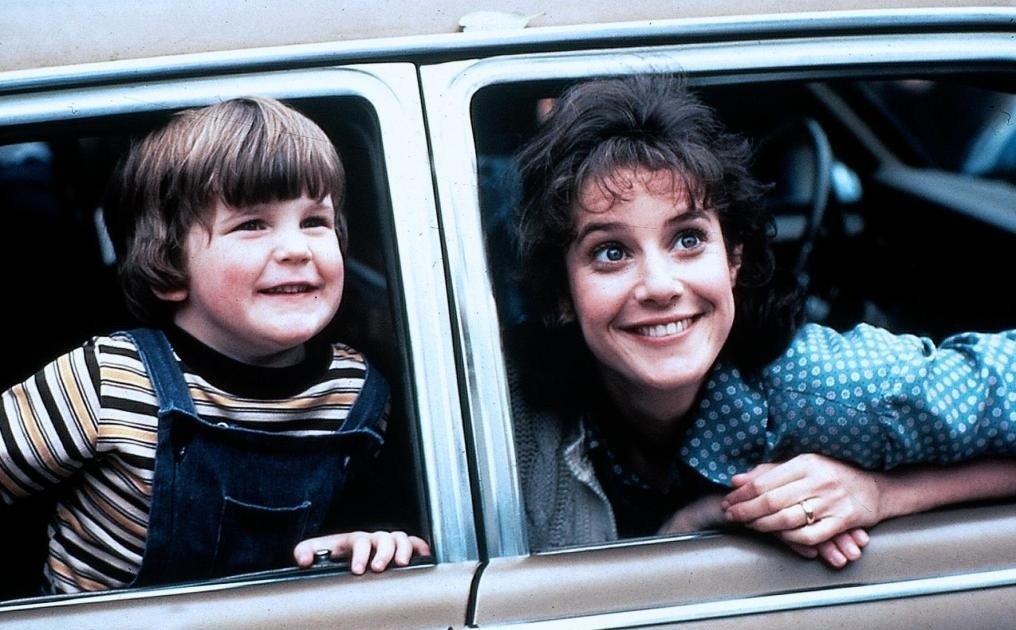More and more, daycares and childcare facilities are installing CCTV cameras and investing in software that allows parents to log in and watch their little one in real time. Some parents love this new technology and enjoy being able to check in on their child during the school day, but others worry that these surveillance systems may have negative implications.
As a former teacher, I have some reservations about the idea of parents being able to watch a class. I worry about it violating the teacher's privacy. There are lots of things that go on in a classroom that don't involve children at all.
Overworked teachers will often eat, mark books and papers, prepare for classes, and even change their clothes in an empty classroom. While a classroom is certainly a shared space, it's also the place where a teacher spends the majority of the day and should therefore offer some measure of privacy.
Another concern is the potential use of the recorded images. The companies that produce this technology are quick to point out security features and password protections, but passwords can be shared, computer screens can be left open, and screenshots can be taken and disseminated elsewhere. This technology could lead to a situation where anything that now happens in that class is potentially available to view in the public sphere.
Some may think this is acceptable and even preferable. Why shouldn't classrooms be open? What do teachers have to hide? If only exceptional levels of teaching and learning are taking place, why does it matter if they are open for observation?
Here are some reasons it does matter. First, exceptional levels of teaching and learning are not happening every minute of every day. Even award-winning teachers have off days.
Second, I've witnessed a variety of occurrences in classrooms that would benefit from the relative privacy of a closed door: For instance, a teacher suffering from a diabetic seizure, an out-of-control child punching another student, an older student losing control of his bowels, small children changing their clothes for a school play, a student disclosing abuse, or a teacher finding out about a death in her family.
It’s easy to see how any of these scenarios would be problematic if filmed and viewed publicly.
Whenever a teacher is observed by either a colleague, administrator, or by a group of parents during a school open day, it inherently changes the nature of their lesson. They are bound to experience some anxiety, as anyone would when being monitored. More importantly, it interferes with the normal camaraderie between teacher and students.
Teachers, of course, expect regular observations and appraisals by administrators and use feedback to improve their teaching practice. However, constant monitoring can be draining. Working to appear professional, teachers may seem stiff in comparison to their normal classroom persona and, in doing so, damage the rapport with their class.
Teaching is a performance. We become attuned to our unique and familiar audience. Throwing in a constant unseen viewer changes the dynamic of that performance.
Educators might also feel self-conscious about some of the more animated yet effective parts of their job. Teachers routinely sing, dance, make animal noises, pull faces, and put on character voices – all of which may suddenly feel embarrassing in front of an adult or unknown audience.
Like it or not, every teacher also usually has one parent that acts as a thorn in their side. These surveillance systems may encourage difficult parents to micro-manage every aspect of a teacher's performance, which goes a long way to stifling a teacher's overall effectiveness.
Although these issues concerning teacher’s privacy and dignity are close to my heart as a former educator, the protection and welfare of children is even more important to me. Here, too, the use of surveillance in the daycare and school classroom is deeply troubling.
In group settings, people very quickly fall into assigned roles. There’s the quiet and thoughtful ones, the leaders, the motivators, the organizers, and unfortunately, there are the maligned, the blamed, and the ‘naughty’ ones.
Children (no doubt motivated by what they see from parents and teachers) quickly work out which of their classmates are behaving and which are not and often gleefully relay this information to their parents. For a poor child to be labeled as a “problem” is damaging enough, but imagine if that child knew that groups of parents were watching his every transgression, or if every time he made a mistake there was an audience ready to criticize.
Children can become typecast in behavior roles, which can be almost impossible to escape. This reputation follows them from class to class, from grade to grade.
The act of observing bad behavior also becomes a shaming mechanism. This can lead parents to think it's within their right to admonish a student simply because they witnessed an event, even though they were not present and perhaps don't understand the context or other drivers.
Mike Holiday, a parent and homeschool educator, is very concerned about the issues of privacy posed by surveillance in the classroom. “A camera in the classroom might put everyone on their best behavior. But the possibility of abuse of power is too great. It is also a huge step towards legalizing other invasions of privacy.”
Parents witnessing stigmatizing behavior problems is bad enough. Add to that the bystanders who believe they understand an entire incident simply because they've watched it on-screen. Sometimes seeing isn't believing. A camera angle can make all the difference. A critical event that happened off-screen may not be taken into consideration, and therefore, viewers who think they have the whole story simply don't.
Some parents may use the camera as a control device by telling their children, "I'll be watching you." This can do irreparable harm to the authority of the teacher within the classroom. Perversely, this can be used as a control device by the teachers themselves with such statements as, "Your mother can see what you're doing."
Even more worrying is a tactic witnessed by Kristi, from South Carolina: “The teacher told the kids that Santa watched them through the cameras.” Kristi approves of the use of cameras in the daycare center for visual records in case of incidents or emergencies. But she's opposed to “the teacher indoctrinating the kids to think surveillance is okay.”
Another area of concern is for those children struggling with developmental or learning difficulties. Surely those students' privacy is violated if all parents can see which reading group they've been assigned to or how much help they receive or if they are sometimes unable to participate in an activity.
Zaida, a mom of two girls and inventor of the Wiggletot Diaper Changer, has other concerns about “the effects of Wi-Fi on thin skulls.” Besides these oft-debated health concerns, she also points to the danger of children having their otherwise private school day dissected by their parents. “Having a parent report back on everything they think wasn’t appropriate or should have been changed in a child could lead to an increase in anxiety in kids.”
Unfortunately, not all children live in caring, loving homes. To that end, most troubling of all is that the use of surveillance could lead to the dissolution of the classroom as a safe space. For children of abuse or neglect, the classroom can represent one of the few places where they are protected, nurtured, and can receive love, attention, and care.
That, if not for any other reason, is compelling justification for keeping classrooms camera-free.
The use of cameras in educational and childcare settings can have benefits. Some parents who are nervous about leaving their children for the first time with strangers may find that this technology puts their minds at ease. Parent Arlene Guzman Todd explains, “I am a big fan of the cameras, they helped provide a feeling of security and allowed me to build trust by watching the caretaker’s interactions with my children.”
There are also situations where parents and carers may not be physically able to see their children, such as in the case of divorce, separation, or when a military parent is deployed. This is the case with Arlene's husband, an active duty service member. “The live feeds allow him to check in on the kids regardless of what part of the world he is in,” she says.
One school district in Pennsylvania has been trialing a new app that has proved popular with both teachers and parents. The Classroom Dojo program functions like a closed-circuit Twitter account. The teacher can use the app to post photos and positive updates throughout the day, making the parents feel informed and included.
Melissa Fullerton, Director of Communications & Community Relations at Governor Mifflin School District, reports that the result has been that “
The difference here seems to be in the concept of control and consent. There's no live feed. Furthermore, the teacher can choose when to share updates, exactly what to show, what to exclude, and what days and times are going to best showcase the class and the learning that is taking place. (Friday afternoon after Phys Ed, for example, would probably not be an optimum viewing time.)
We should work toward a balance between maintaining appropriate privacy and respect in the classroom whilst also creating an open and inviting environment for parents.



